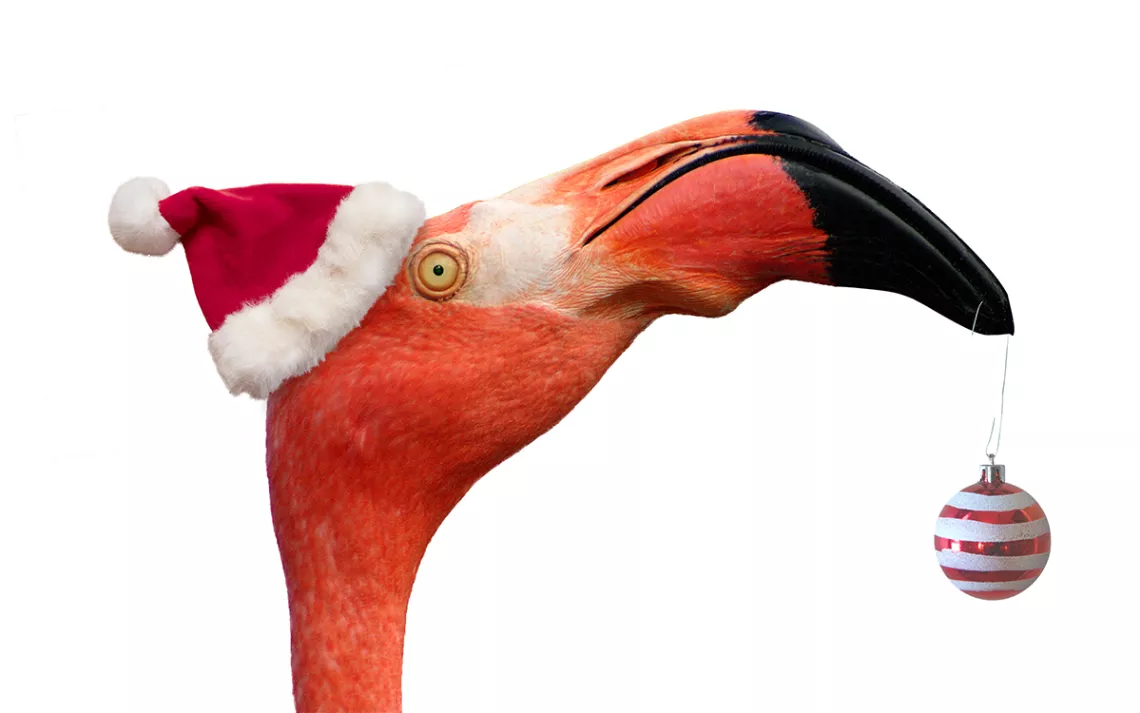Prime Places to Partake in Audubon’s Annual Christmas Bird Count
Here’s where to fly for some of winter’s best birding

Photo by Fortch
Looking for something to tweet about? Spend part of the holiday season helping the National Audubon Society complete its 118th annual Christmas Bird Count. From December 14 to January 5, join tens of thousands of bird-lovers across the Western Hemisphere as they help add to the longest-running wildlife census in the world. Your tallies contribute to a large pool of information that helps ornithologists and conservationists protect native birds and their environments. It’s a tradition that welcomes all to participate, and we’ve found five places where you can find your fowl.
The Magic Hedge: Illinois
Spend a brisk day scouring the Chicago North Side for elusive snowy owls and lapland longspurs. Tucked behind Montrose Beach on Lake Michigan, the Magic Hedge famously harbors hundreds of shorebirds and songbirds as they migrate each spring and fall—but still boasts a sizable winter population. If the hedge gets old, you could always walk northeast to Fish Hook Pier, where you can scan the shoreline and open water for waterfowl. Pro tip: It pays to be an early bird at this site—lots of friendly fanatics flock here in the morning. You might want to ask them to help you scout out any particularly rare species on your list.
Bayou Sauvage National Wildlife Refuge: Louisiana
This 24,000-acre gem lies entirely within the city limits of New Orleans, making it the nation’s largest urban wildlife refuge. Surrounded on three sides by water, the sanctuary offers a great chance to see waders, ducks, rails, and raptors. Route 90 will take you straight to the bayou’s best birding spots: the main visitors’ area (on the left) and the marsh observation deck (on the right). For an inside view of the trail, I suggest you launch a boat from the Madera Marsh unit.
Garden Canyon: Arizona
Swoop into the world-renowned eco-crossroads of the Sierra Vista for a one-of-a-kind birding experience. Spot Cassin’s and Botteri’s sparrows in the canyon’s grassy fields or journey to the central picnic area, where a small stream draws in birds like the sharp-shinned hawks, which chase slow-flying elegant trogons among the trees. With five life zones within five miles, these sky islands comprise a lush hotspot of sought-after species such as the spotted owl. Come back in the spring when the towering deciduous forest in the lower canyon fills with migrating tanagers, warblers, and grosbeaks. For your convenience, Tucson Audubon provides a list of specialty birds in the area.
Merritt Island National Wildlife Refuge: Florida
This site is eminently driveable. Cruise down Black Point Wildlife Drive—its seven-mile, one-way, self-guided auto loop takes you through both fresh- and saltwater marshes. The drive offers several stops, each of which is described in a brochure—available at the drive’s entrance or at the visitor information center—featuring wading birds, shorebirds, raptors, waterfowl, alligators, river otters, and even bobcats. If you go in the winter, keep an eye out for bird feeders that attract brilliantly colored painted buntings.
Klamath Basin: Oregon
Our final destination has christened itself “home of the best birding in the West”—and rightly so. Klamath Basin has the highest concentration of wintering bald eagles in the lower 48 states, and throughout the year hosts 80 percent of Pacific Flyway birds. Observers can marvel at the density and diversity of birds that congregate throughout over 45 bird-viewing sites—one of which attracts 50 to 100 bald eagles during the peak mid-winter season. View mountains, deserts, Crater Lake, lava beds, geothermal areas, horst, and graben formations as you explore Klamath’s deep and shallow water marshes/wetlands, coniferous forests, juniper woodlands, oak chaparral, sagebrush grasslands, grassy meadows and rocky cliffs. Plus, visitors can combine their birding experience with the multitude of other recreational opportunities in the area, such as hiking, skiing, fishing, paddling, snowshoeing, camping, and dog-sledding.
 The Magazine of The Sierra Club
The Magazine of The Sierra Club



